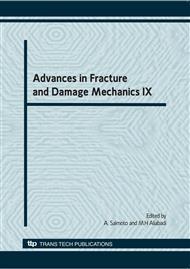p.497
p.501
p.505
p.509
p.513
p.517
p.521
p.525
p.529
Comparative Analysis of Seismic Damage of the Earthquake Fortification and Non-Earthquake Fortification Masonry Buildings
Abstract:
In this paper, the typical seismic damage of earthquake fortification and non-earthquake fortification masonry buildings are analyzed and the causes are illustrated, which are based on a large number of earthquake disaster survey data of Ms8.0 Wenchuan earthquake, Ms6.4 Baotou earthquake and Ms7.8 Tangshan earthquake and so on. According to the damage statistics data of several past earthquakes of China in recent years, the difference of damaging phenomenon and rate of earthquake damage of earthquake fortification and non-earthquake fortification masonry buildings in highly and lowly seismic regions are discussed and analyzed. Finally, based on the analysis conclusions, how to improve the seismic capacity of masonry buildings are discussed combining current seismic design code of China and some reasonable suggestions on the post-disaster reconstruction of masonry buildings have been given.
Info:
Periodical:
Pages:
513-516
Citation:
Online since:
November 2010
Authors:
Price:
Сopyright:
© 2011 Trans Tech Publications Ltd. All Rights Reserved
Share:
Citation:


